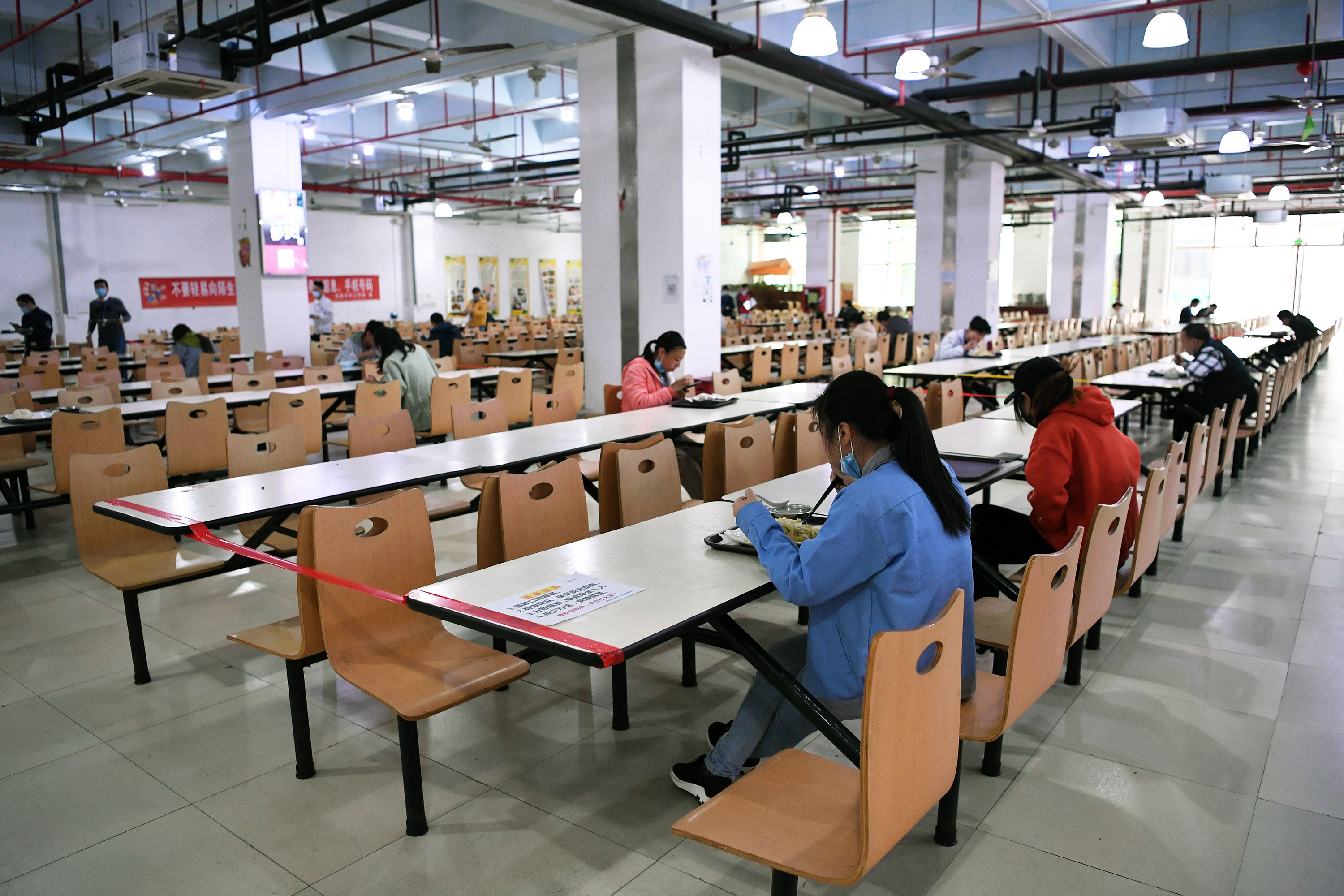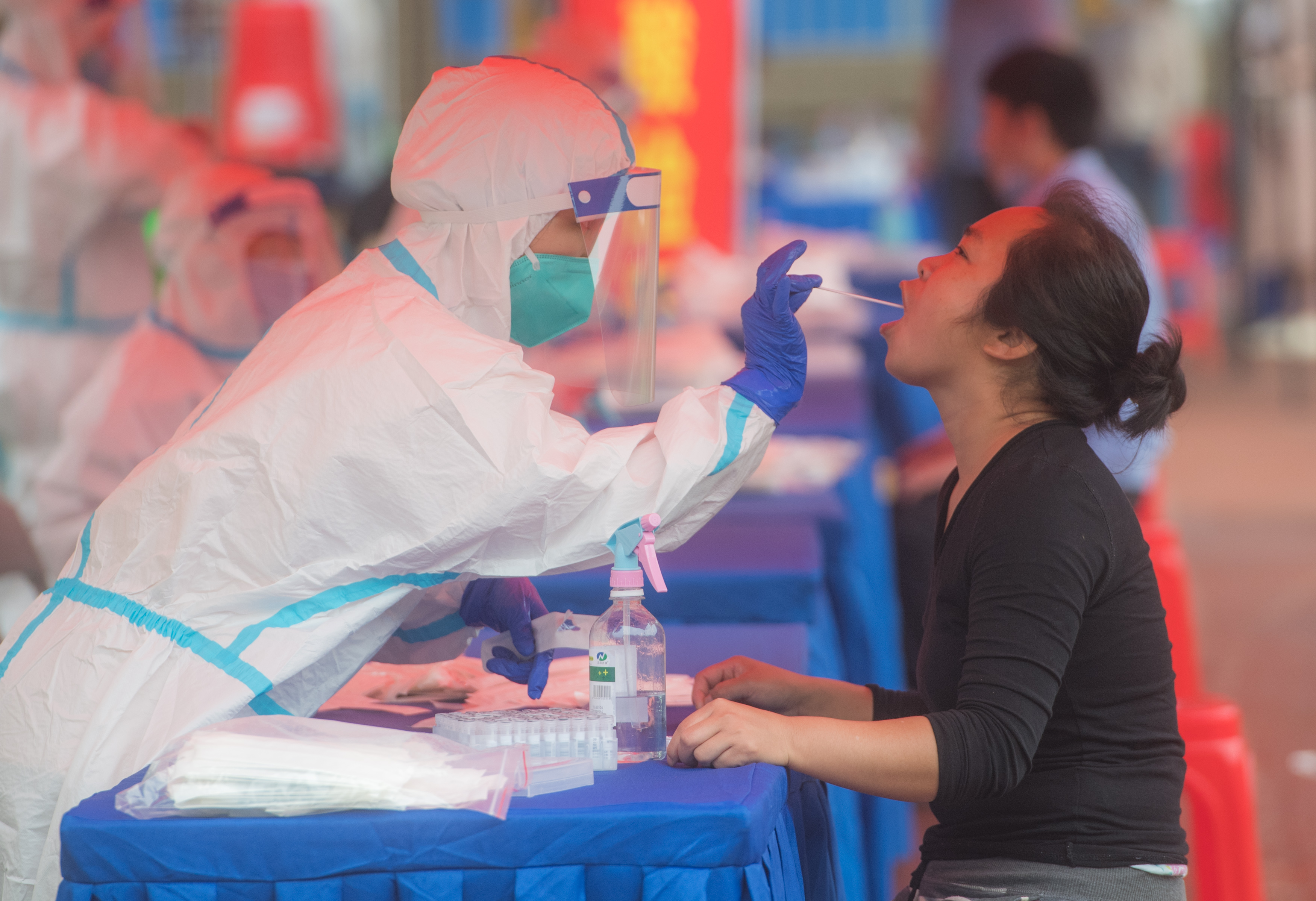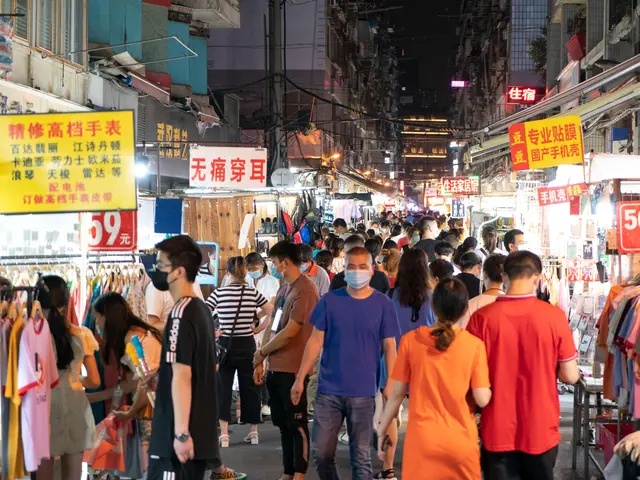Amid a ballooning caseload of COVID-19, China's recent months of discreet reopening can offer fresh valuable lessons for an array of countries, which are now faced with rising risks posed by their hasty decision to return to a new normalcy of life and rash exit from lockdowns.
With COVID-19 largely under control at home, China has been putting economic and social activities back on track while at the same time working to prevent a potential new surge of the infectious disease that has taken a heavy toll on the human society.
To achieve this goal, a return to work should be phased and careful. Factories of medical supplies and other key materials in epidemic prevention began humming again in late January, accompanied by gradual recovery of petrochemical, telecommunications, electricity and transport industries in the following weeks. Businesses in the service sector, such as catering and retail, did not begin to bustle until the epidemic steadily receded in the country in March.
Social distancing has now become a part of everyday life in China. While wearing masks is a must in public areas, various sectors of the society have been reducing density by adopting flexible measures.

Workers eat at intervals as required at Hytera Industrial Park in Longgang District of Shenzhen, south China's Guangdong Province, Feb. 10, 2020. (Xinhua/Liang Xu)
To prevent crowding, factories and companies have been offering flexible working hours and work-from-home options for employees. From Shanghai Disneyland to the Palace Museum in Beijing, tourist attractions, restaurants, and museums reopened in recent months but has been capping the daily number of visitors.
Public transport has also adopted safety measures with vigilance. When Wuhan resumed its subway service in late March after more than two months of suspension, subway carriages carried signs asking passengers to sit in between empty seats. In cities with ride-hailing drivers, their vehicles are installed with plastic sheets between the front and the rear seats to prevent contact.
Apart from those preventive measures, conducting mass coronavirus testing in key areas and maintaining temperature checks in public spaces can also help authority nip new infections in the bud.
Wuhan, the epicenter of China's coronavirus outbreak, tested nearly 10 million residents citywide after lifting its lockdown. China's health authority has also scaled up testing in border areas such as Mudanjiang in the northeast, where the risk of imported cases is high.

A resident takes nucleic acid test at a testing site in Dongxihu District in Wuhan, central China's Hubei Province, May 15, 2020. (Xinhua/Xiao Yijiu)
Temperature screening is stringently conducted on a broader scale nationwide. People are required to have their temperature taken while entering offices, schools and universities, restaurants, subway stations, gyms, hospitals, and communities, among others.
While taking all those measures, going digital can make epidemic prevention and economic recovery much easier.
In cooperation with digital tech giants, local governments have launched health codes on smartphone apps such as Wechat and Alipay to rate a user's risk of infection. Meanwhile, health authorities have also pushed for online diagnosis and treatment services as well as drug delivery services to reduce non-essential outdoor activities.
Digitalization has also helped dormant businesses spring back to life. Cities such as Beijing, Tianjin and Hangzhou have offered digital vouchers worth billions of U.S. dollars to the buying public, while e-commerce livestreaming has become a popular way for merchants, manufacturers and farmers to sell products, with over 4 million e-commerce livestreaming marketing activities held in the first quarter of this year.
When a new surge of cases seems on its way, strong and swift measures should also come back as soon as possible.
For example, after Suifenhe city bordering Russia in northeast China's Heilongjiang Province saw rising imported cases in April, all inbound personnel were required to undergo testing and a fortnight quarantine at designated places. With additional medical resources deployed, by May 12, all 409 cases imported and under treatment or medical observation have been discharged.
As China is still feeling its way back to normalcy, its experience tells that exit from lockdowns cannot be treated as a gamble. Countries worldwide should manage the recovery process with caution, perseverance and coordination, so that the hard-won results of an arduous battle against the virus will not be spoiled.
 简体中文
简体中文

